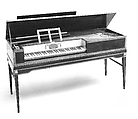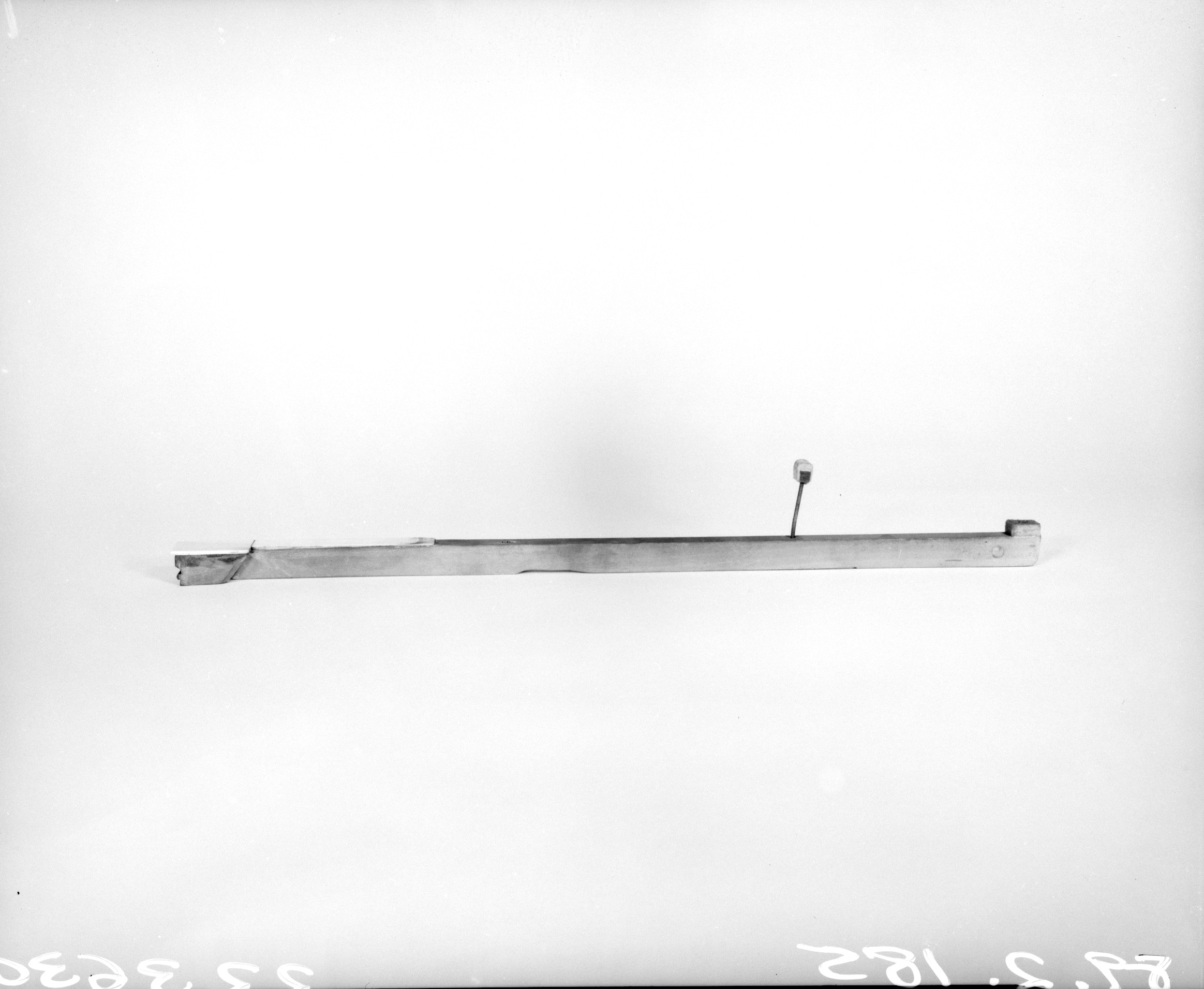Square Piano
Charles Albrecht German
Not on view
Charles Albrecht, a German immigrant, was one of the earliest known piano makers in this country probably arrived in October of 1785 and is known to have been actively building instruments by 1791 in Philadelphia. More than twenty instruments by Albrecht are known to survive.
This example, serial number 24, has a rectangular case with mahogany veneer panels and sist on a stand with four square tapered legs each of which has brass medallions on the upper corners. The nameboard is veneered with light wood decorated around maker's name with painted floral garland. A single handstop is located in the well to the left of the keyboard and is activated to remove the dampers from the strings.
Technical description: Rectangular case with mahogany veneer panels separated from contrasting border by geometric inlays, on separate stand with 4 square tapered legs having brass medallions at upper corners; nameboard veneered with light wood decorated around maker's name with painted floral garland; compass FF-f3 (61 keys), ivory naturals with molded fronts, ebony accidental blocks; 1 handstop in well to left of keyboard raising dampers; unpierced tuning pins with note names alongside, inserted in raised panel running diagonally across soundboard; English double action with short intermediate lever, no escapement; overhead damper arms hinged to tilting panel in case back, raised by wood pegs against pressure of quill springs; double-strung throughout, lowest 12 notes wound. (L. Libin 6 Oct. 76)
Due to rights restrictions, this image cannot be enlarged, viewed at full screen, or downloaded.
This artwork is meant to be viewed from right to left. Scroll left to view more.





